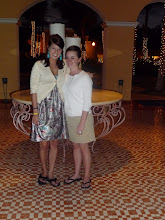

A diaspora is a dispersal of people from their homelands. Throughout our world's history, there have been many diasporic groups. For examples, diasporas occurred because of religious persecutions, the Irish potato famine, after the Holocaust, the native Americans journey west, African slaves to America, and the movement of Jewish people. These mass migrations occur under four specific elements. These elements are...
1. A diaspora is a scattering of people, voluntary or not, from one place to at least two destinations.
2. The group of people must have some relationship to an actual or imagined homeland. They have a notion with a particular homeland, which they are being taken away from.
3. The group has a self-awareness of their own identity.
4. The diaspora is multigenerational and must exist over at least two generations.
In the picture on top, many people are making their way from their homeland to a safer place to live. Years ago, when one did not follow the set religious standard or beliefs, they were often forced to leave their hometown. The people above are fleeing from religious persecution in hopes of finding a better place to live and practice their beliefs freely.
In the picture on the bottom, the people are suffering from the potato famine in Ireland. With little to eat, they were forced to move elsewhere to live a better life. Many Irish people moved to the East coast of the United States to start completely over with their families.
"It ain’t where you’re from, it’s where you’re at"
- Paul Gilroy






